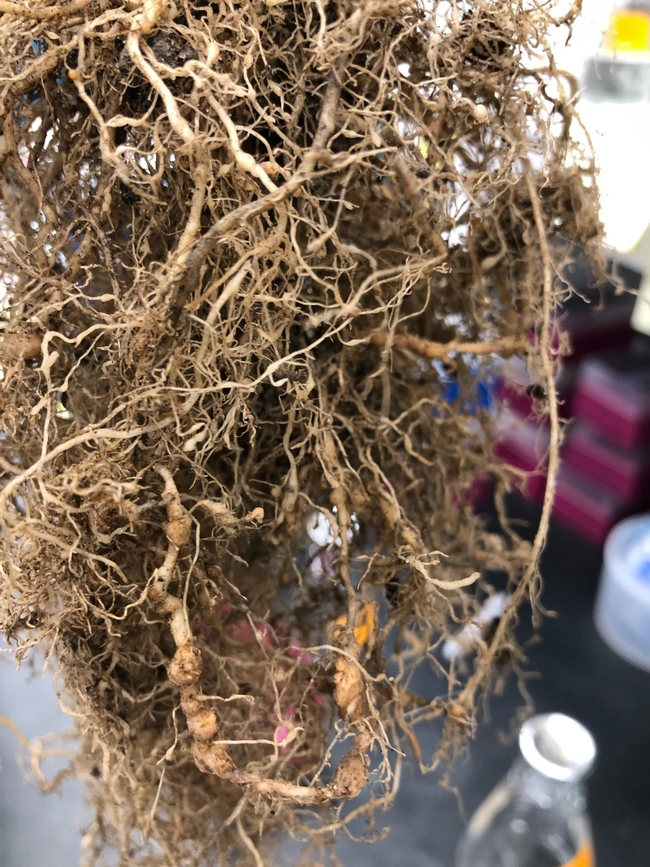- Author: Kathy Keatley Garvey
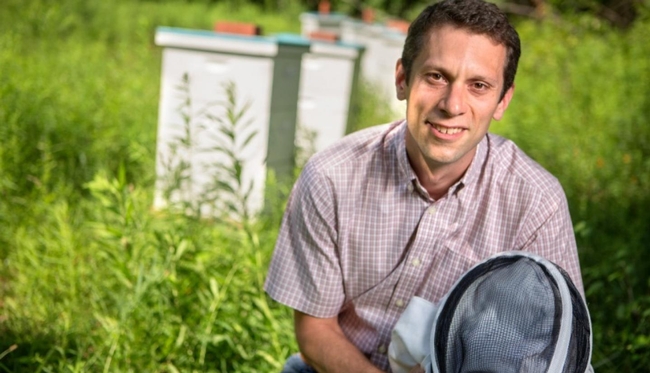
The seminar begins at 4:10 p.m. The Zoom link:
https://ucdavis.zoom.us/j/99515291076
"The use of synthetic chemical pesticides is central to current agricultural practices worldwide," McArt says in his abstract. "But what is the cost to wildlife via non-target exposures? This talk will summarize when there's risk to bees, when there isn't, and what types of research are most likely to influence farmers, regulatory agencies, and policy makers."
McArt, who joined the Cornell faculty in 2017, focuses his research on pollinator health and ecology. His areas of expertise include disease ecology, ecotoxicology, community ecology, chemical ecology, and plant-pollinator interactions. He maintains his lab research site at https://blogs.cornell.edu/mcartlab/.
"Research in our lab focuses on the impact of pesticides, pathogens, and habitat on honey bees and wild bees," he writes on his website. "We are particularly interested in scientific research that can inform management decisions by beekeepers, growers and the public. Current research projects include: 1) Understanding pesticide exposure and risk to bees in multiple land management contexts, 2) Combining empirical data with network modeling to understand pathogen transmission in complex plant-pollinator networks, and 3) Understanding how habitat enhancements (e.g., flowers at solar power sites) impact pollinator populations and the services they provide to agriculture."
McArt's duties at Cornell also include director of the Cornell Chemical Ecology Core Facility, and associate curator of the Cornell University Insect Collection.
He writes a monthly column, Notes from the Lab, in American Bee Journal; each month he summarizes scientific publications for a non-scientific audience. "The goal is to make the emerging pollinator health science more approachable and relevant to beekeepers," he says.
He is also a member of the New York State (NYS) Beekeeper Tech Team, which works directly with NYS beekeepers to improve honey bee health, reduce colony losses, and increase profitability of the state's beekeeping industry: https://pollinator.cals.cornell.edu/nys-beekeeper-tech-team/
In addition, McArt coordinates such beekeeping workshops as "Introduction to Honey Bee Queen Rearing" and "Honey Bee Biology and Disease Management for Veterinarians" and engages with growers regarding pesticide risk to bees and creating pollinator-friendly habitat. His extension materials are onsite.
When asked "What gets you out of bed in the morning?" during a new faculty interview, he responded "Most of the factors contributing to declines in bee health (pesticide exposure, lack of floral resources, disease, inadequate management practices) are preventable. With targeted research efforts and educated stakeholders, regulatory agencies and public, we can make a difference."
McArt holds a bachelor of arts degree in environmental and evolutionary biology (2001) from Dartmouth College, Hanover, N.H., and a master's degree in biological sciences (2006) from the University of Alaska, Anchorage. He received his doctorate in entomology in 2012 from Cornell University. He served as a USDA-NIFA (National Institute of Food and Agriculture) postdoctoral fellow at the University of Massachusetts, Amhurst, in 2014, and then as a research scientist at Cornell from 2014 to 2017, before joining the Cornell faculty.
Nematologist Shahid Siddique, assistant professor, UC Davis Department of Entomology and Nematology, is coordinating the spring seminars. For Zoom technical issues, contact him at ssiddique@ucdavis.edu.
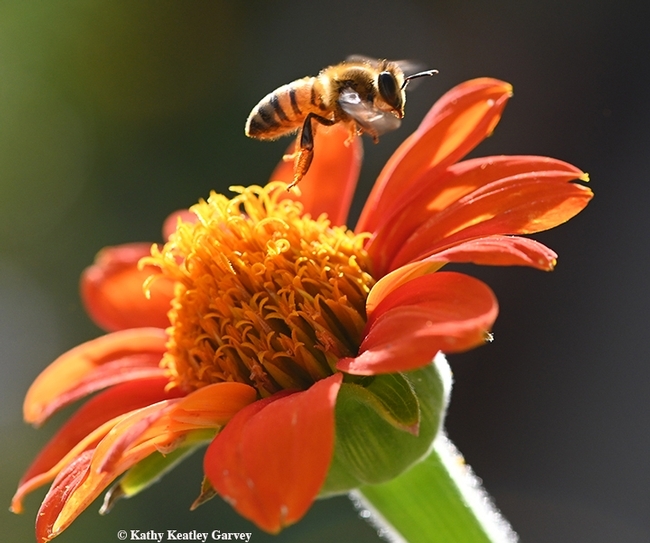
- Author: Kathy Keatley Garvey
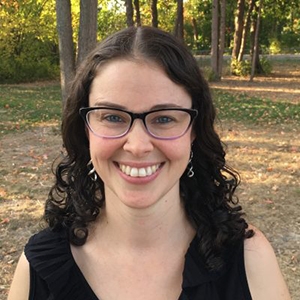
Her seminar, from 4:10 to 5 p.m., will be hosted by Marshall McMunn of the Phil Ward ant lab. Access the seminar through this Zoom link.
"Symbiotic interactions shape animal evolution and govern patterns of biodiversity," Ramalho writes in her abstract. "Using ants as a study model, my research focuses on unraveling the role of host ecology, diet, behavior, stage of development, and phylogeny on symbiotic interactions."
Ramalho, a cell and molecular biologist from Brazil, joined the Moreau lab in January 2019. She holds three degrees from Universidade Estadual Paulista Júlio de Mesquita Filho (UNESP): a bachelor's degree (2010), master's degree (2013) and doctorate (2017). Her doctoral thesis: "Ants' Microbiome with Emphasis in Camponotini (Hymenoptera, Formicidae."
Experienced in the areas of microbiome, genetics, genomics, and more specifically molecular biology, Ramalho focuses her research on "understanding the mechanisms that impact microbial communities, unraveling the role of ecology, diet, behavior, stage of development, and also phylogeny of the host in these symbiotic interactions," she writes on her website. "To better understand these mechanisms, I use ants as a study model. In several ant genera, symbiotic interactions with microbial communities have been shown to have profound impacts on the host. But more than that, ants can be found across the globe and have an immense diversity of behaviors and ecology. Also, ants are fascinating."
"In addition to focusing on studying the microbiome of ants, I also advocate for a more diverse and inclusive scientific community," she relates. "Quality science is done with a diverse group of scientists with different backgrounds. Being an ally of women in science and parents in science, and others underrepresented groups that seek inclusion in science and scientific dissemination, is a passion that I am very proud and pleased to be part of. I believe that the world can be a better place with science, and with all that power, science should be for EVERYONE."
Ramalho co-authored "Attractivity or Repellence: Relation Between the Endophytic Fungi of Acalypha, Colocasia and the Leaf-Cutting Ants--Atta sexdens," published in April 2021 in Advances in Entomology.
Other recent publications include:
Ramalho, M.O., Kim, Z.; Wang, S.; Moreau, C. S.: "Wolbachia across Social Insects: Patterns and Implications." Annals of the Entomological Society of America, 2021.
https://doi.org/10.1093/aesa/saaa053
Ramalho, M.O.; Moreau, C.S.: "The Evolution and Biogeography of Wolbachia in Ants (Hymenoptera: Formicidae)." Diversity, 12, 426. 2020.
https://doi.org/10.3390/d12110426
Caruzo, M.B.R.; Ramalho, M.O.; Philipp, J.; Bragagnolo, C.: "Maternity, Science, and Pandemic: an Urgent Call for Action!" Hoehnea, 47: e812020. 2020.
https://doi.org/10.1590/2236-8906-81/2020
Cooperative Extension specialist Ian Grettenberger coordinates the spring seminars, which take place every Wednesday at 4:10 p.m. He may be reached at imgrettenberger@ucdavis.edu for any technical issues.
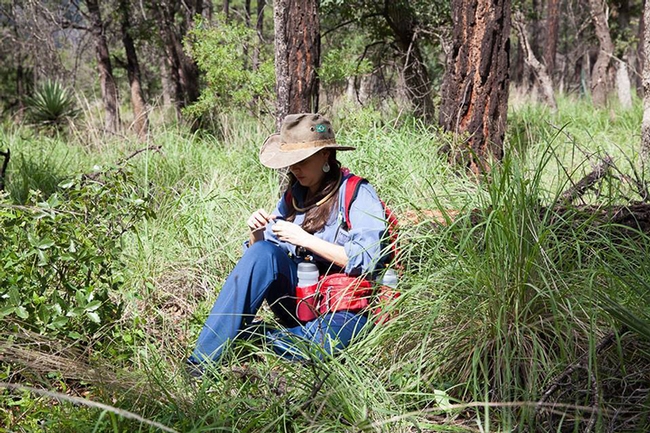
- Author: Kathy Keatley Garvey
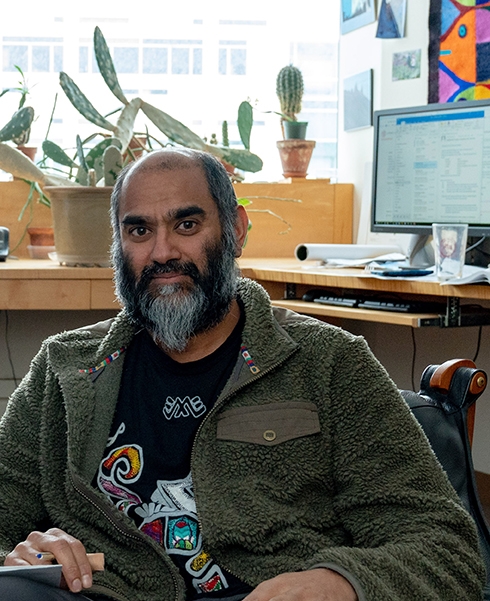
Agrawal is one of 120 newly elected members, of which 59 are women. The number of NAS members now totals 2,461, according to NAS president Marcia McNutt.
Agrawal received his doctorate in population biology in 1999 from UC Davis, working with major professor Richard "Rick" Karban, UC Davis Department of Entomology and Nematology.
"Anurag is an inspiration as a scientist and as a person," Karban said. "I've learned a lot from him."
At Cornell, Agrawal researches the ecology and evolution of interactions between wild plants and their insect pests, including aspects of community interactions, chemical ecology, coevolution and the life cycle of the monarch butterfly.
Agrawal authored the celebrated book, Monarchs and Milkweed: A Migrating Butterfly, a Poisonous Plant, and Their Remarkable Story of Coevolution, published in 2017 by Princeton University Press. He investigated "how the monarch butterfly has evolved closely alongside the milkweed—a toxic plant named for the sticky white substance emitted when its leaves are damaged—and how this inextricable and intimate relationship has been like an arms race over the millennia, a battle of exploitation and defense between two fascinating species," according to the publisher.
The book won a 2017 National Outdoor Book Award in Nature and Environment and an award of excellence in gardening and gardens from the Council of Botanical and Horticultural Libraries. It was also named one of Forbes.com's 10 best biology books of 2017.
“It's a tremendous honor and totally unexpected,” Agrawal told the Cornell Chronicle in a recent news release. “I look forward to representing Cornell and also playing a part in the NAS role of advising the U.S. government on science policy.”
"A key research focus for Agrawal's Phytophagy Lab is the generally antagonistic interactions between plants and insect herbivores," according to the news release. In an attempt to understand the complexity of communitywide interactions, questions include: What ecological factors allow the coexistence of similar species? And what evolutionary factors led to the diversification of species? Agrawal's group is currently focused on three major projects: the community and evolutionary ecology of plant-herbivore relationships; factors that make non-native plants successful invaders; and novel opportunities for pest management of potatoes. Recent work on toxin sequestration in monarch butterflies was featured on the cover of the April 20 issue of Proceedings of the National Academy of Sciences."
Members are elected to NAS in recognition of their distinguished and continuing achievements in original research. Membership is a widely accepted mark of excellence in science and is considered one of the highest honors that a scientist can receive. Among those elected to NAS: Bruce Hammock, UC Davis distinguished professor of entomology who holds a joint appointment with the UC Davis Comprehensive Cancer Center. He was elected to NAS in 1999.
Agrawal holds two degrees from the University of Pennslvania, a bachelor's degree in biology and a master's degree in conservation biology. He joined the Cornell faculty in 2004 as an assistant professor of ecology and evolutionary biology, with a joint appointment in the Department of Entomology. He advanced to associate professor in 2005, and to full professor in 2010. He was named the James A. Perkins Professor of Environmental Studies in 2017.
A fellow of the American Association for the Advancement of Science (2012), and recipient of the American Society of Naturalist's E.O. Wilson Award in 2019, Agrawal won the Entomological Society of America's 2013 Founders' Memorial Award and delivered the lecture on Dame Miriam Rothschild (1908-2005) at ESA's 61st annual meeting, held in Austin, Texas.
Agrawal was at UC Davis in January of 2012 to present a seminar on "Evolutionary Ecology of Plant Defenses." His abstract: "In order to address coevolutionary interactions between milkweeds and their root feeding four-eyed beetles, I will present data on reciprocity, fitness tradeoffs, specialization and the genetics of adaptation. In addition to wonderful natural history, this work sheds light on long-standing theory about how antagonistic interactions proceed in ecological and evolutionary time."
Read a review of his Monarchs and Milkweed book from the journal Ecology and read the first chapter here. You can order the book here.
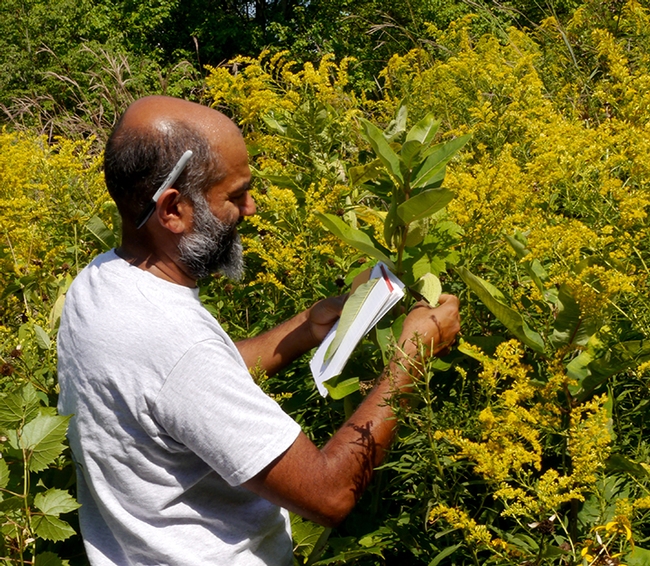
- Author: Kathy Keatley Garvey

Hoffmann, who received his doctorate in entomology in 1990 from UC Davis, studying with Professor Ted Wilson and later Professor Frank Zalom, will present the Leigh Distinguished Alumni Seminar on “Our Changing Menu--What Climate Change Means to the Foods We Love and Need,” the title of his upcoming book. The seminar was initially set for April 15 at the International House, UC Davis, but due to the global coronavirus outbreak, it has been postponed.
Prior to his retirement, Hoffmann served as executive director of the Cornell Institute for Climate Smart Solutions for several years. He continues to provides visionary leadership, communicates to a wide range of audiences the challenges and opportunities that come with a changing climate, and builds partnerships among public and private organizations.
Hoffmann co-chairs the President's Sustainable Campus Committee and helps lead a climate change literacy initiative for students, staff, and faculty. He dedicates his time toward what he calls “the grand challenge of climate change and (to) help people understand and appreciate what is happening through food.” Effectively communicating about climate change, Hoffmann presented a TEDX talk in 2014 on “Climate Change: It's Time to Raise Our Voices” that drew widespread attention.
A native of Wisconsin, Hoffmann holds a bachelor of science degree (1975) from the University of Wisconsin, and his master's degree from the University of Arizona (1978). He served with the U.S. Marines in Vietnam from 1967 to 1971, attaining the rank of sergeant.
Hoffmann remembers well his experiences at UC Davis. “I was privileged to work with many dedicated faculty in entomology and several other departments.”
After receiving his doctorate at UC Davis, Hoffmann joined the faculty of Cornell in 1990 as an assistant professor, with 60 percent Extension and 40 percent research duties, and advanced to associate professor in 1996, and professor in 2003. His academic career focused on administrative endeavors (80 percent) beginning in 1999.
Hoffmann's career at Cornell included serving as associate dean of the College of Agriculture and Life Sciences, associate director of Cornell Cooperative Extension, director of the Cornell University Agricultural Experiment Station, and director of the New York State Integrated Pest Management Program. He helped initiate a leadership and professional development week-long program that benefited more than 400 faculty at Cornell and beyond.
Prior to his administrative duties, he worked to develop and implement cost-effective and environmentally sensitive tactics for management of insect pests. He emphasized biological control, development and application of insect behavior modifying chemicals, and novel control tactics, all in an integrated pest management (IPM) context. Much of his research and Extension programming was multi-state and multidisciplinary in nature.
Among his entomological achievements, he
- Developed unique, cost-effective and environmentally benign biological control tactics for insect pest of sweet corn, peppers and potatoes, and presented wide scale demonstrations on conventional and organic farms in New York, Virginia, Massachusetts and Canada.
- Published the first popular guide to beneficial insects (64 pages, with more than 5,000 copies distributed)
- Developed patented unique fiber barrier technology for pest control
Highly honored for his expertise, Hoffmann was selected the recipient of the Experiment Station Section Award for Excellence in Leadership in 2015. He won an Entomological Foundational Professional award for Excellence in Integrated Pest management, Entomological Society of America, Eastern Branch, in 2006. He created a one-of-a-kind culture of sustainability at the Cornell University Agricultural Experiment Station focused on reducing the carbon footprints and costs, and ensuring staff well-being. He helped initiate a leadership and professional development week-long program that has benefited more than 400 faculty at Cornell and beyond.
Hoffmann authored more than 100 refereed publications, mostly related to entomology.
The Leigh seminar memorializes cotton entomologist Thomas Frances Leigh (1923-1993), an international authority on the biology, ecology and management of arthropod pests affecting cotton production. During his 37-year UC Davis career, Leigh was based at the Shafter Research and Extension Center, also known as the U.S. Cotton Research Station. He researched pest and beneficial arthropod management in cotton fields, and host plant resistance in cotton to insects, mites, nematodes and diseases. In his memory, his family and associates set up the Leigh Distinguished Alumni Seminar Entomology Fund at the UC Davis Department of Entomology. When his wife, Nina, passed in 2002, the alumni seminar became known as the Thomas and Nina Distinguished Alumni Seminar.
Leigh joined the UC Davis Department of Entomology in 1958, retiring in 1991 as an emeritus professor, but he continued to remain active in his research and collaboration until his death on Oct. 26, 1993. The Pacific Branch of the Entomological Society of America awarded him the C. F. Woodworth Award for outstanding service to entomology in 1991.
- Author: Kathy Keatley Garvey
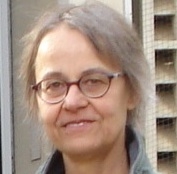
The nine-member research team, led by Frank Schroeder, a BTI professor and also a professor in Cornell University's Department of Chemistry and Chemical Biology, detailed how plants speak “roundworm language” for self-defense. The work is published Jan. 10 in the journal Nature Communications.
The researchers studied chemicals called ascarosides, which the worms produce and secrete to communicate with each other. Williamson helped analyze the data and helped make some key insights toward the paper's conclusions, the BTI scientists related.
The team found that plants “talk” to nematodes by metabolizing ascarosides and secreting the metabolites back into the soil.
“It's not only that the plant can ‘sense' or ‘smell' a nematode,” Schroeder said in a BTI news release. “It's that the plant learns a foreign language, and then broadcasts something in that language to spread propaganda that ‘this is a bad place.' Plants mess with nematodes' communications system to drive them away.”
The study built on the team's previous work showing that plants react to ascr#18 – the predominant ascaroside secreted by plant-infecting nematodes – by bolstering their own immune defenses, thereby protecting them against many types of pests and pathogens.
In those earlier studies, “We also saw that when ascr#18 was given to plants, the chemical disappears over time,” according to lead author Murli Manohar, a senior research associate at BTI.
That observation, along with published literature suggesting plants could modify pest metabolites, led the team to hypothesize that “plants and nematodes interact via small molecule signaling and alter one another's messages,” Schroeder said.
To probe that idea, the team treated three plant species – Arabidopsis, wheat and tomato – with ascr#18 and compared compounds found in treated and untreated plants. They identified three ascr#18 metabolites, the most abundant of which was ascr#9.
The researchers also found Arabidopsis and tomato roots secreted the three metabolites into the soil, and that a mixture of 90% ascr#9 and 10% ascr#18 added to the soil steered nematodes away from the plant's roots, thereby reducing infection.
The team hypothesized that nematodes in the soil perceive the mixture as a signal, sent by plants already infected with nematodes, to “go away” and prevent overpopulation of a single plant. Worms may have evolved to hijack plant metabolism to send this signal. Plants, in turn, may have evolved to tamper with the signal to appear as heavily infected as possible, thereby fooling would-be invaders.
“This is a dimension of their relationship that no one has seen before,” said Manohar. “And plants may have similar types of chemical communication with other pests.”
Although the mixture of ascr#9 and ascr#18 could serve as a crop protectant, Schroeder said there should be no detriment to using straight ascr#18 on crops, as described in the team's earlier research.
“Ascr#18 mainly primes the plant to respond more quickly and strongly to a pathogen, rather than fully inducing the defensive response itself,” he said. “So there should be no cost to the plant in terms of reduced growth, yield or other problems.”
The team also showed that plants metabolize ascr#18 via the peroxisomal β-oxidation pathway, a system conserved across many plant species.
“This paper uncovers an ancient interaction,” Schroeder said. “All nematodes make ascarosides, and plants have had millions of years to learn how to manipulate these molecules.”
He added: “Plants aren't passive green things. They are active participants in an interactive dialog with the surrounding environment, and we will continue to decipher this dialog.”
These discoveries are being commercialized by a BTI and Cornell University-based startup company, Ascribe Bioscience, as a family of crop protection products named PhytalixTM.
Scientists affiliated with four institutions--BTI, Cornell, UC Davis and the USDA's Robert W. Holley Center for Agriculture and Health--co-authored the paper. Grants from USDA and the National Institutes of Health funded the research.
Sources:
